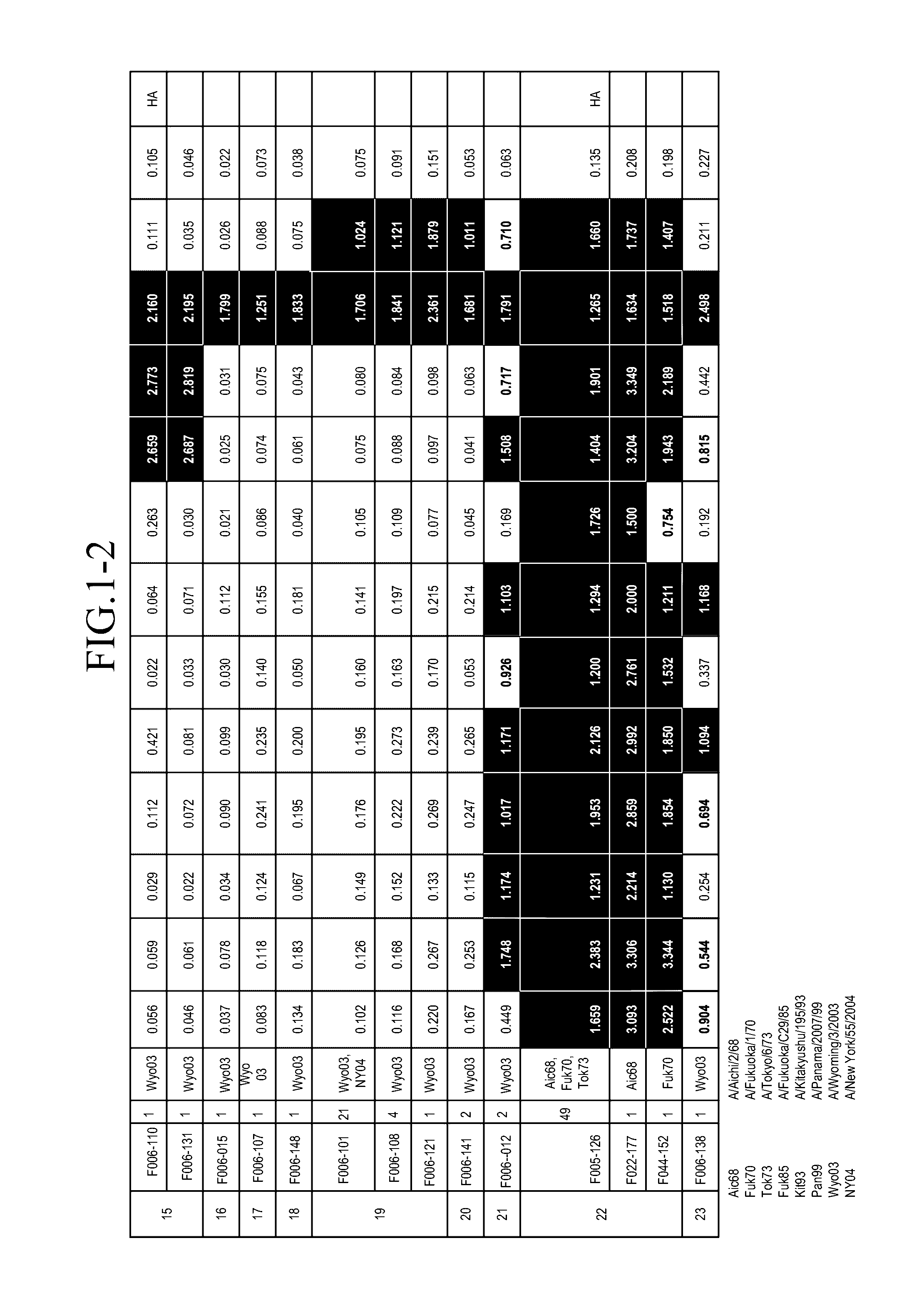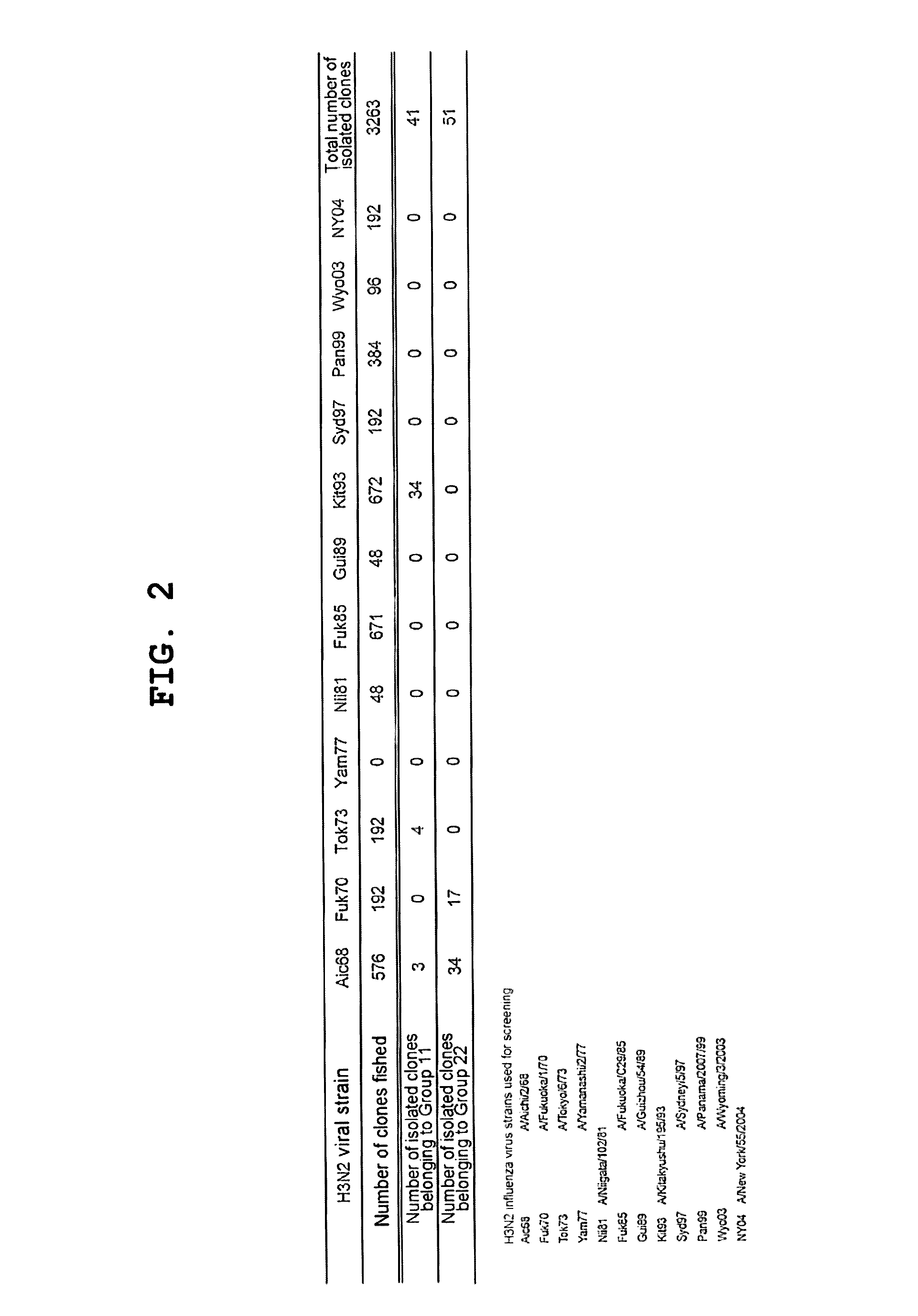Influenza virus-neutralizing antibody and screening method therefor
a technology of anti-influenza virus and antibody, which is applied in the field of anti-influenza virus antibody, can solve the problems of ineffective use of medicine that has been developed with considerable effort, inability to detect phage antibodies, and inability to achieve serious investigation of phage antibody libraries to date, so as to achieve the effect of effectively preventing or treating influenza
- Summary
- Abstract
- Description
- Claims
- Application Information
AI Technical Summary
Benefits of technology
Problems solved by technology
Method used
Image
Examples
examples
Blood Sampling
[0136]An amount of mononuclear cells equivalent to 3 L of blood was collected by apheresis from a pediatrician born in 1974. Blood sampling was performed in May 2004.
Preparation of Human Phage Antibody Library
[0137]A human phage antibody library was prepared by the phage display method. Approximately 109 lymphocytes were recovered from the blood component obtained by the blood sampling with Ficoll-Paque, and RNAs were isolated. cDNAs were amplified from the RNAs to construct libraries of antibody Heavy chains (VHs) and Light chains (VLs), respectively. The clone numbers of Heavy chains and Light chains were about 109 and 106, respectively. Then, Heavy chains and Light chains were combined to construct a human phage antibody library of Fab-cp3 type, which was a library including about 1010 clones.
Influenza Virus Strains Used
[0138]The following influenza virus strains were used in this Example. Unless otherwise noted, abbreviations in the subsequent Examples indicate the...
PUM
| Property | Measurement | Unit |
|---|---|---|
| diameter | aaaaa | aaaaa |
| volume | aaaaa | aaaaa |
| pH | aaaaa | aaaaa |
Abstract
Description
Claims
Application Information
 Login to View More
Login to View More - R&D
- Intellectual Property
- Life Sciences
- Materials
- Tech Scout
- Unparalleled Data Quality
- Higher Quality Content
- 60% Fewer Hallucinations
Browse by: Latest US Patents, China's latest patents, Technical Efficacy Thesaurus, Application Domain, Technology Topic, Popular Technical Reports.
© 2025 PatSnap. All rights reserved.Legal|Privacy policy|Modern Slavery Act Transparency Statement|Sitemap|About US| Contact US: help@patsnap.com



